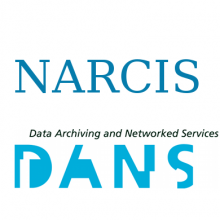Resource information
The Wageningen spatial planning education curriculum is based on a mix of decision-oriented and design-oriented approaches. It is also intertwined with a wide range of E-learning options. The Elearning environment consists of a spectrum of applications such as model studies, spatial analysis using GIS, scenario studies, imaging results or support in the educational and the planning process. At the end of the 1980’s already divers applications were intertwined in the training of planning students at Wageningen University. What has changed over more than 25 years in spatial planning, in computer applications, and in its related curriculum structure? This paper wants to address these experiences. Several courses on spatial planning at Wageningen University are used as examples, some courses from the end of the 1980’s and some recent courses. An overview is presented based on experiences during this 25 years of education in spatial planning and the role IT (the computer) has had in this process. Developments in IT went fast, but also the way we deal with planning issues has been in transition. Looking back, the spatial planning process itself changed from a technocratic to a more sociocratic approach, from top-down and sectoral to co-creation planning, from only an economical (profit) rural focus towards including people and planet aspects in a growing metropolitan environment. In the mean while computational possibilities for supporting different planning related aspects grew enormously. Software is much more advanced (from simple raster data calculations to 3D or 4D representations, often applied in many forms of Planning Support Systems); the handling has much improved (offering sometimes too much functionality for class circumstances); the storage capacity and speed of processing increased enormously (creating also enormous data overflow); the digital accessibility of articles, reports, books and journals took a huge step (creating questions what to choose for references; information overflow); new instruments to replace ‘paper or analogue oriented’ processes into digital processing were implemented (eg. Touch tables and serious gaming). And new IT developments are knocking on the educational door, such as VR (virtual reality) and AR (augmented reality) in combination with MOOC (massive open online courses). Until now all these IT related changes also transform the planning education itself. It requires a constant refocus on instrument training in combination with the changing planning process focus. It also requires a shift and an intensification in knowledge, cognitive and attitude skills for the students, to deal with more complex options and reflective approaches of both the spatial planning process as the supportive instruments.


